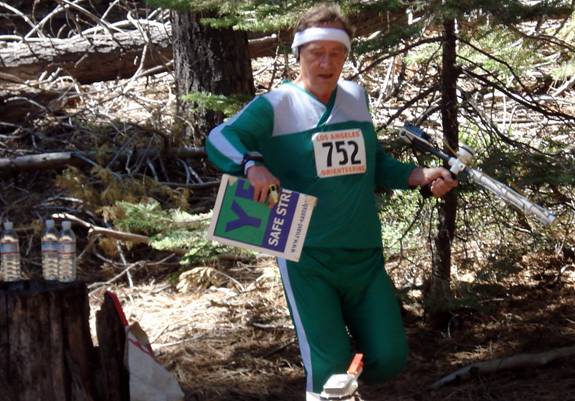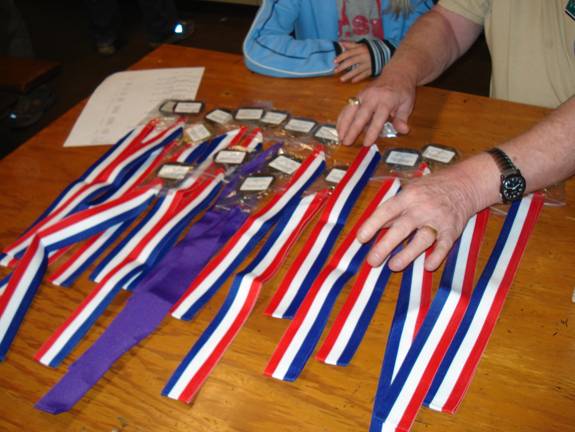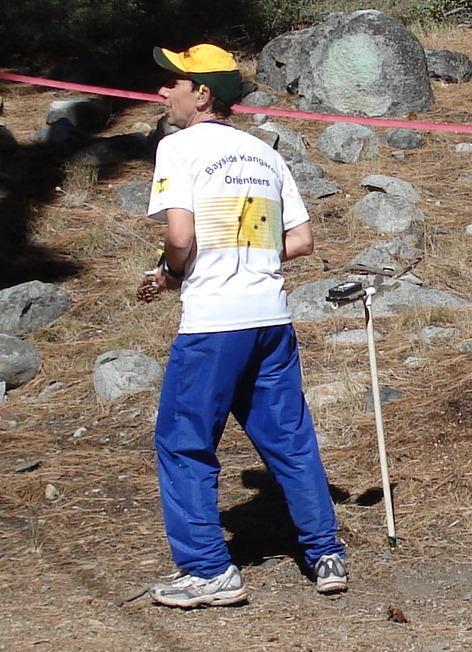
posted 9/22/07
So there I was, on a peaceful Saturday
morning, sitting peacefully in my camp chair, high above

commotion of a human body flailing through the brush. This person was in a hurry, and I had been waiting hours for him to arrive. He was only the first of 22 competitors to come my way.
On
Imagine a track meet cross country event over broken terrain with all the forest wildlife present, (we did encounter a bear), and thirty competitors carrying radios and antennas, charging around trying to find the transmitting stations, and do it before someone else. If you have that image, you have a decent idea of how ARDF operates.
You have to be in decent physical condition, and know your equipment capabilities and limitations. I was serving as a race marshal at transmitter number 3.
You can see in the photo above the basic
equipment. First the competitor dressed for brush crashing, equipped with
a finger mounted RFID stick on his right hand in which he also grasps a map
board depicting the local terrain. In his left hand he carries a three
element 2 meter yagi to which is attached a radio receiver and an attenuator.
By listening to the correct one minute transmission, he can zero in on the
transmitter and eventually find it. Once in the immediate vicinity,
perhaps 30 yards, he or she can see it clearly marked by a flag mounted just off
the ground. The RFID stick is inserted into a time clock-like device, and
the competitor races off to find the next transmitter. There is no time
for celebration, no arms thrust in the air, no joyous shouts of triumph.
He or she must get on with it, find the next transmitter or the finish line.
It all has to be done in three hours. This competitor is Jay Hennigan,
WB6RDV, of
My own participation as race marshal was
limited to photography during the actual run. Once the three-hour period
was up, I took the transmitting station apart and returned all materials to
Saturday night we enjoyed a nice tri-tip supper and an awards ceremony. I got to help hand out the awards for the 2-meter competition.

The striped ribbons are all attached to
medals for the

Santa Barbara Amateur Radio Club (BARC) and the Los Angeles Orienteering Club (LAOC) sponsored the competition. Marvin Johnston, KE6HTS, was the meet director (or chairman), Joe Moell, K0OV, handled publicity, and Bob Cooley, KF6VSE, was the course setter.
Due to airline reservations, and a late start resulting from transmitter glitches, many competitors on Sunday had to finish the event and get on the road. I cannot say how the awards were handed out on Sunday, as I also had to leave. But I can tell you that this group of radio enthusiasts is skilled and able. If you think you can pull one over on them by hiding a transmitter, think again. I believe they would find it.
73, Ron Murdock, W6KJ